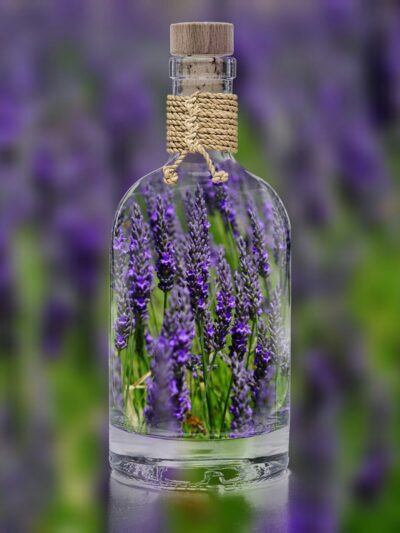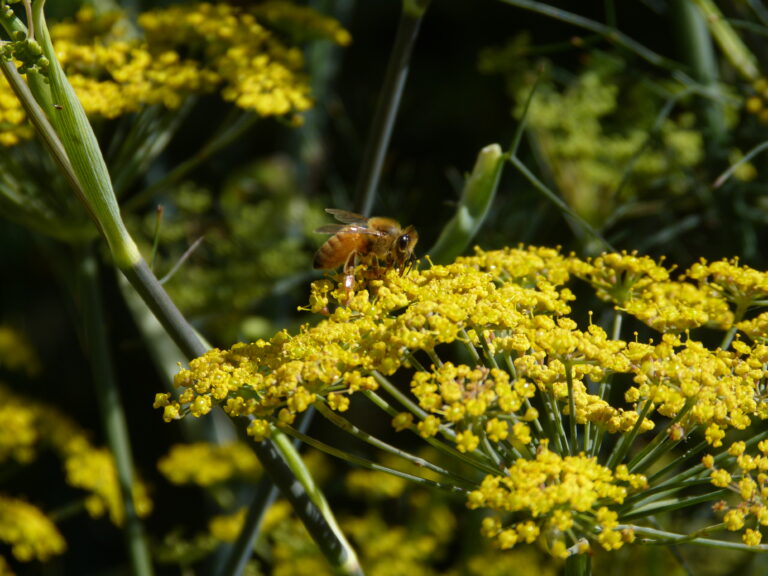The Pacific Northwest is blessed with a climate that favors the growing of dozens or more herbs for use in the kitchen, beauty, and health products. Growing them yourself affords the opportunity to preserve them for future use a little at a time during the growing season or with larger harvests all at once in the late summer. Be sure to grow your herbs with few inputs to keep them healthy and safe for use. Most herbs don’t require much more than well drained soil, sunshine and regular watering. Some, like rosemary, are drought tolerant once established. Not being bothered by pests often you can ensure a pesticide free harvest.
DRYING HERBS
- Air
- Low-moisture herbs like marjoram, oregano, rosemary, sage, thyme and dill
- Place in a warm, dry spot out of direct light.
- Tie stems and wrap bundles in muslin, mesh produce bag or paper bag with holes.
- Dehydrator
- Herbs like basil, chives, lemon balm, tarragon and mint contain more moisture
- Temperatures range 95 – 115 degrees F, pre-heat for best results
- Takes 2-4 hours
- Better quality dehydrators also have thermostats, temperature controls and double-walled construction for more efficient energy usage.
- Oven
- Herbs like basil, chives, lemon balm, tarragon and mint contain more moisture
- Always want to set the oven to the lowest temperature possible to prevent burning. Temperatures range from 200 – 450 degrees F, pre-heat for best results
- Takes 2-4 hours

FREEZING HERBS
- Whole or chopped – oregano, marjoram, sage, and thyme – spread on a cookie sheet and freeze – place in foil packets and label
- In water – basil, parsley, tarragon, lemon balm, mint, and dill – chop herbs and add to ice cube tray that is half full of water – when frozen pop out and add to freezer bag – use within 2 months
- In oil – basil, parsley, tarragon, lemon balm, mint, and dill – chop herbs and add to ice cube tray then fill with olive oil – when frozen pop out and add to freezer bag – use within 3 months
- In butter – all herbs – chop herbs and add to butter, mix well and freeze in foil to use for later – use within 12 months
INFUSING HERBS IN OIL –
rosemary, sage, thyme, oregano, marjoram and other sturdy woody herbs
- Windowsill method
- Add DRIED whole or chopped herbs to oil and make sure is fully submerged
- Cap jar and shake
- Place on windowsill and shake daily for 2-3 weeks
- Strain the herbs and store oil in cool, dark place
- Use within 6 months
- Heating method
- Add DRIED whole or chopped herbs to oil and make sure herb is fully submerged
- Heat oil over low heat (100-140 F) for 1-5 hours until oil takes on the color and smells of the herbs.
- Let cool and then strain the herbs and store oil in cool, dark place.
- Use within 6 months
HERB SALTS AND SUGARS
- Herb Salts for culinary use – rosemary, sage, thyme, oregano, marjoram, and lavender
- Add whole or chopped herbs with salt to food processor and pulse a few times to combine – use within 6 months
- Herb Sugars for culinary use – rosemary, sage, thyme, oregano, marjoram, and lavender
- Add whole or chopped herbs with sugar to food processor and pulse a few times to combine – use within 6 months
GROWING HERBS AND WHEN TO HARVEST
LIGHT REQUIREMENTS
- Full sun: 6 or more hours of sunlight
- Rosemary, oregano, sage, thyme, marjoram, basil, parsley, tarragon, lemon balm, dill, chives, mint, shiso, cilantro, lavender, summer and winter savory
- Part Sun: 3-6 hours of sunlight
- Mint, lemon balm, parsley, chives, sorrel
SOIL AND WATER NEEDS
- Well-draining sandy soil
- Rosemary, oregano, sage, thyme,
- Well-draining soil with frequent watering
- Basil, dill and tarragon
- Can grow in a variety of soils including well-draining soil or a moist soil rich in organic matter
- Chives, lemon balm, mint
LIFE CYCLE
- Annual: plants that complete their lifecycle –germinate from seed, grow to a mature plant, flower and produce seed, dies- in one year or less. Summer annual herbs are planted in late May and harvested throughout the summer.
- Basil, dill, shiso, cilantro
- Biennial: plants that complete their lifecycle in two years. During the first year these plants will grow roots, stems and leaves and in the second year they will flower and produce seeds.
- Parsley
- Perennial: plants that take 2+ years to complete their lifecycle. They will live for many years producing flower and seeds many times throughout their life.
- Marjoram, oregano, rosemary, sage, thyme, chives, lemon balm, tarragon, mint
SIZE AND POT NEEDS
- Kept in containers, herbs can be trimmed to stay compact.
- Grown in the garden, some herbs can grow as groundcovers like thyme, small herbaceous plants, like oregano or parsley, or small woody shrubs, like lavender, sage and lemon balm. Rosemary can get quite large, exceeding 5 feet in height and 3 feet in spread!
- Prune rosemary annually to control size or allow to grow into a large shrub.
- Divide lemon balm and all mints annually or keep in a container to prevent from spreading
HARVESTING HERBS
- Leaves from annual herbs can be harvested multiple times during their lifecycle. Up to 50% of the plant can be harvested at one time. For better flavor, harvest the leaves before the plant flowers.
- Leaves from perennial plants can be harvested many times throughout the plant’s life. Up to 30% of the plant can be harvested at one time. Leaf flavor may change as the plant starts to flower. Harvest while flowers are tight in the bud for best essential oil content – Lavender is a great example of how to learn when to harvest.
